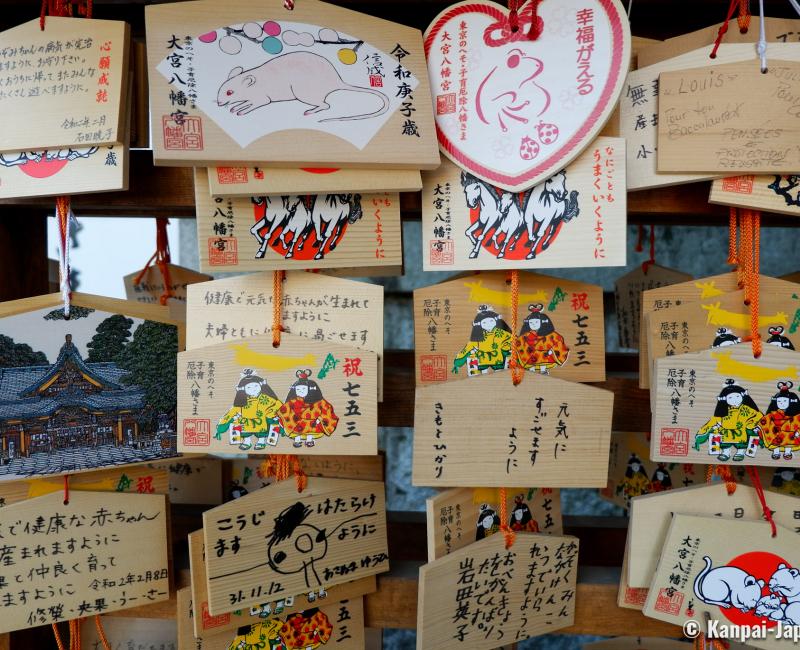Zenpukuji-gawa
Sakura Along the River in Western Tokyo
Zenpukuji-gawa is a river crossing Suginami ward, in the west of Tokyo. The river meanders in the capital’s residential neighborhoods with parts of its banks developed for promenade. Each spring, about 550 cherry trees bloom on the riversides, making Zenpukujigawa Ryokuchi Park and Wadabori Park ideal places to celebrate hanami.
Zenpukuji-gawa wells from Zenpuku Park’s ponds, in the north of Nishi-Ogikubo station on the Chuo Line and creates a green lung for Western Tokyo’s inhabitants along its bed. It crosses Suginami ward towards south-east and flows into the Kanda River near Nakano-Fujimicho subway 🚇 station on the Marunouchi Line.
The Zenpukuji River’s sides have been urbanized over time and are now home to large and pleasant residential neighborhoods. However, the banks have been remodeled with concrete walls to protect the houses from the potential floods after heavy rains ☔️ and yearly typhoons 🌀.
The most interesting area to walk, or in other words, the riverside that retained the most woods and nature, is located in the south of Minami-Asagaya subway and includes both Zenpukujigawa Ryokuchi Park and Wadabori Park.

Zenpukujigawa Ryokuchi Park’s blooming cherry trees
In the weekend or at the end of the day, the green Zenpukujigawa Ryokuchi Park’s regular crowd the premises to enjoy a relaxing time and do some sports. One can meet joggers, locals walking their dogs and children of the neighboring blocks who use the playgrounds. Benches placed along the river welcome people enjoying reading under the sun and sometimes musicians for an outdoor rehearsal. Groups of friends also play basket ball or tennis. You will find here a quiet and human-sized Tokyo, on the opposite of the bustling downtown and its skyscrapers.
On an average day, the Green Park is a nice place to visit when traveling in the surroundings but it is far from being a must-see in the capital. However, it is very attractive in early spring, near the end of March when the Japanese sakura 🌸 blooming season is at its peak. Zenpukujigawa Ryokuchi is also home to an area gathering about 400 cherry trees scattered on 1,5 kilometer along the river. Japanese people merrily celebrate the contemplation of the pale pink flowers of the somei yoshino sakura with delicious picnics and plenty of drinks. Very few foreign tourists come to the park and it is therefore a good address to enjoy a more local and immersive ambiance.

Omiya Hachiman-gu shrine in Wadabori
Continue the visit toward east to find a more diversified landscape in Wadabori Park which begins from Hakusanmae Bridge. The river bordered by cherry trees leads to a pond that is also a wild birds reserve. The forest become thicker with trees of various species such as zelkova, camphor and Japanese pine trees.
Walking slightly away from the Zenpukuji-gawa, you can visit the spiritual site of Omiya Hachiman-gu, located to the south of Wadabori Pond and whose unmissable main entrance is framed by two large vermilion torii ⛩️ gates. Dedicated to kami Hachiman (the god of war and agriculture), the shrine was founded in 1063 by Minamoto no Yoriyoshi (988 – 1075), an important lord of the times. Forsaken by tourists due to its location far from Tokyo’s center, it is nonetheless one of the largest Shinto grounds of the capital, with Meiji-jingu, Yasukuni and Tomioka Hachiman-gu.
Nowadays Omiya Hachiman-gu mainly receives prayers for expectant mothers to have a safe delivery and for academic success. Various amulets for protection can be purchased, as well as ema votive plates that ornament the inner courtyard of the shrine.
Wadabori Park also shelters large sport facilities such as athletic and baseball fields. Nearby in a bend of the river, an elevated view point under the sakura blossoms offers a panorama on Tokyo and Shinjuku’s characteristic skyline.
For a thorough sightseeing of both parks along the Zenpukuji River, visitors may consider renting a bike 🚲 to better enjoy the exploration.

